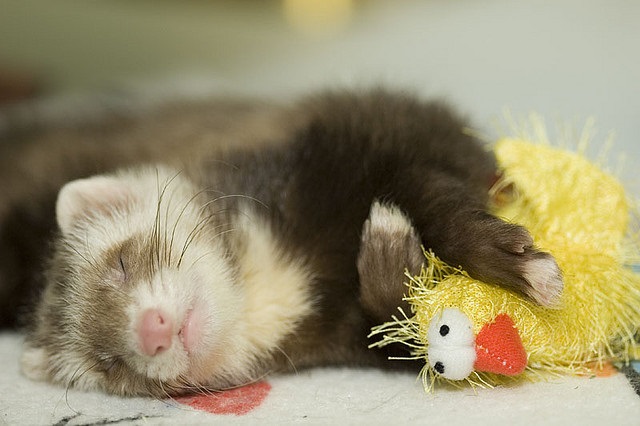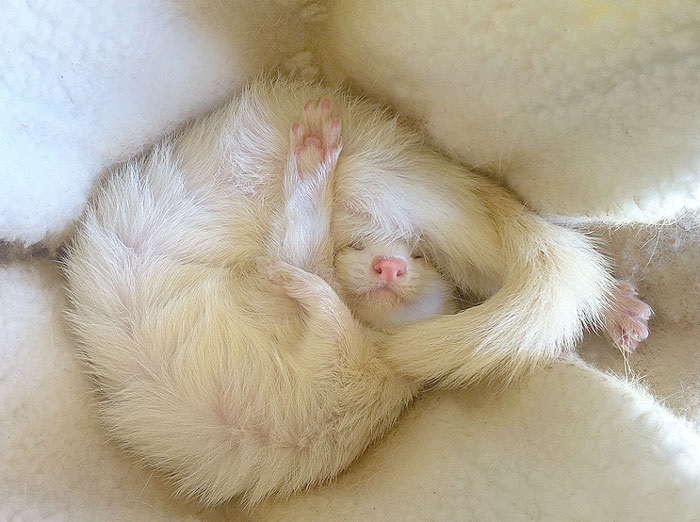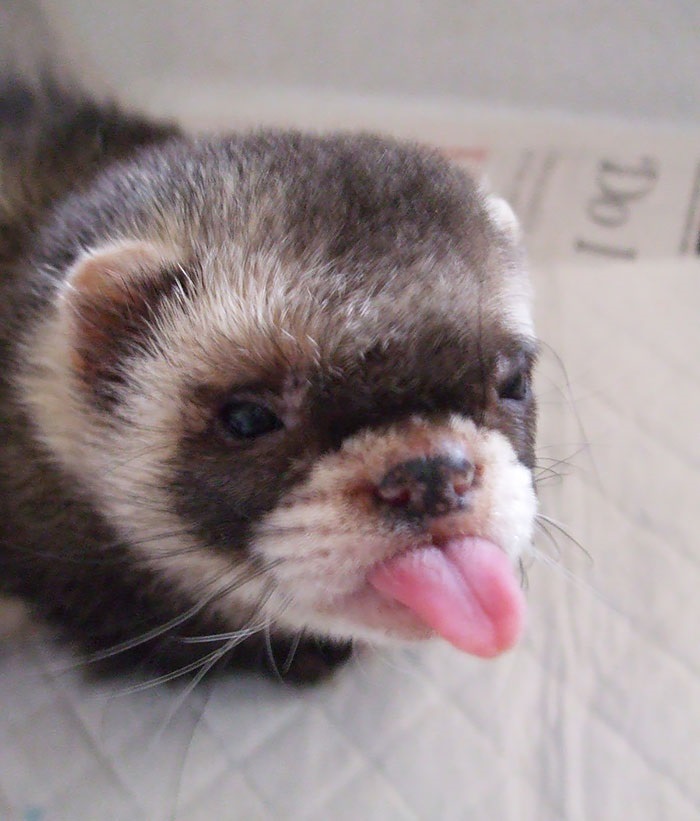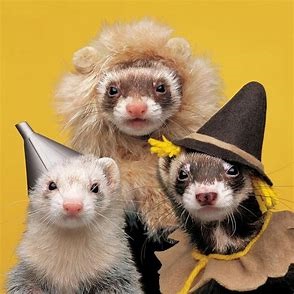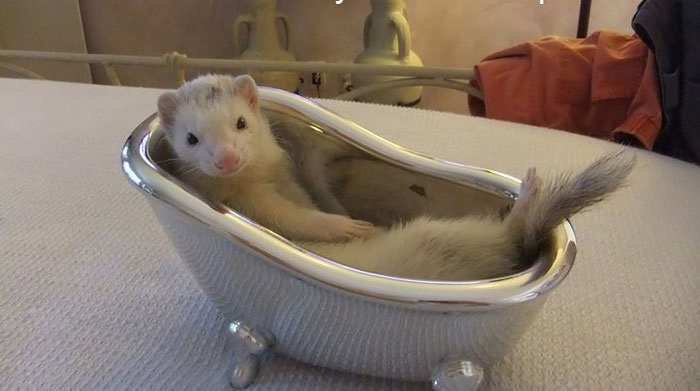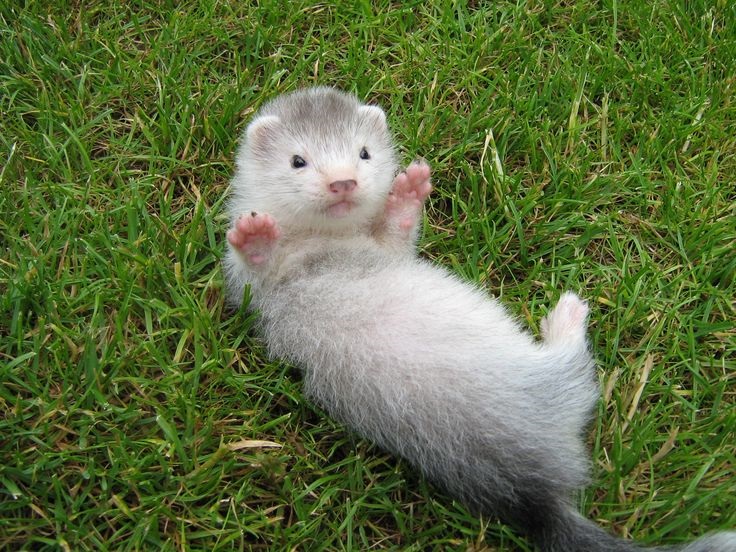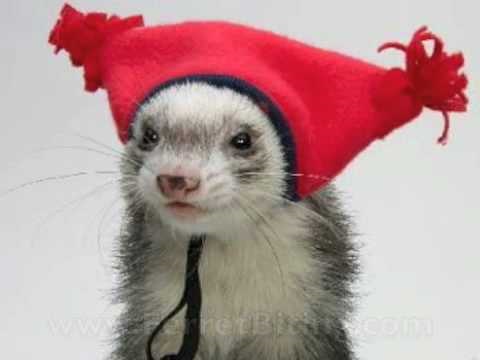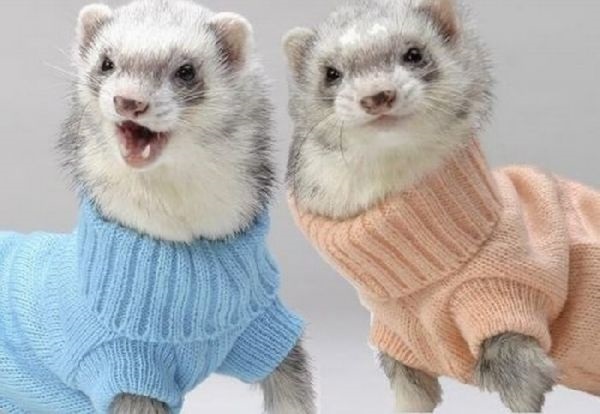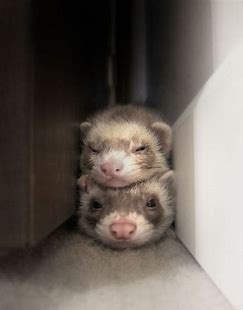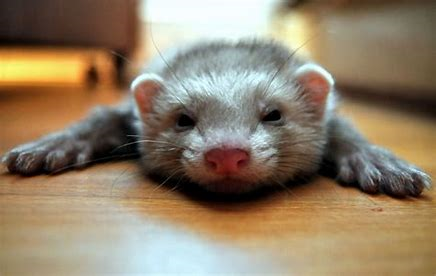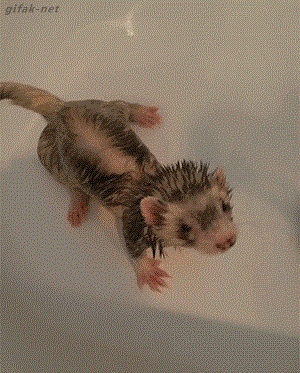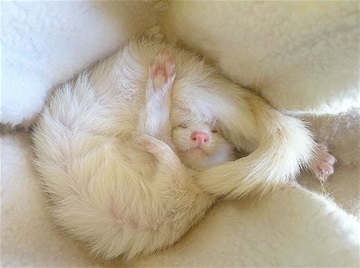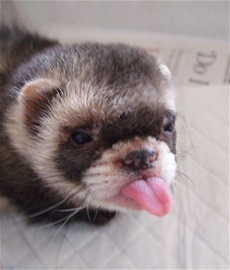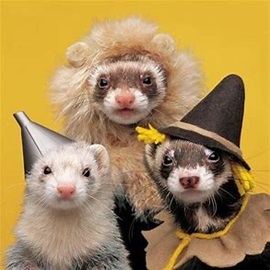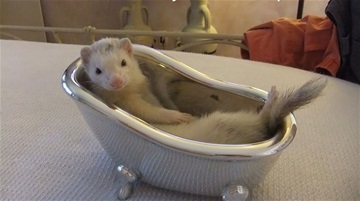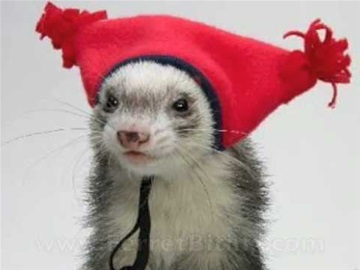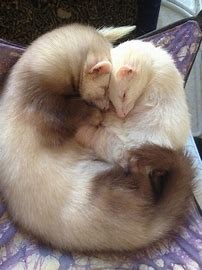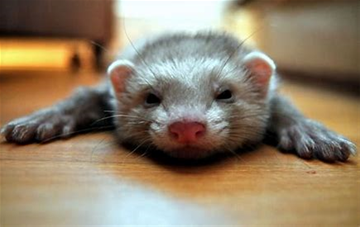APRIL 2ND NATIONAL FERRET DAY
NATIONAL FERRET DAY
April 2nd celebrates National Ferret Day which is a day dear to my heart and makes me remember our ferret Ferrick – RIP you were the most fantastic pet!
Ferrick arrived into our lives after being adopted. His initial name chosen by my son at first was Rocky the Rocky Star Maynard which being a bit of a mouthful then quickly became Ferrick due to small children not being able to pronounce Ferret.
Ferrick quickly became part of the family. His pink eyes would light up when handled and the more you handled him the more friendly he became minus the nipping of various body parts he really was adorable!
Ferrick was in our lives for a few years which were precious and he will always be remembered; especially the smell which was only what could be described as ‘different’.
So on National Ferret Day Hob and Jill went up the hill with their little Kits to celebrate National Ferret Day because that’s some serious business.
Male ferrets are called Hobs and female ferrets are called Jills. Their offspring are called Kits. The whole family is called a Business.
A part of the mustelid family, ferrets are carnivores and are joined by the otter, badger, weasel, marten, mink and wolverine.
They are quite crafty hunters and have been domesticated for over 2,000 years for just that purpose. Used to “ferret” out and kill mostly vermin that would otherwise grow out of control, ferrets were a useful tool. Their razor sharp teeth are definitely those of a carnivore.
These wildly, curious creatures have been recently domesticated as pets in the last few decades. While their skill in the wild may have been considered masterful, as a pet they can be a mischievous handful if not properly trained. Highly intelligent, they can be trained to do an assortment of tricks and to use a litter box. A social animal, they do require attention and preferably a ferret companion.
Like other mustelids, ferrets have scent glands that produce a musky, often offensive odor.
The word “ferret” is from the Latin fur, meaning “little thief.” Indeed, one of the ferret’s favorite activities is stealing and hiding things.
Ferrets belong to the weasel (Mustelidae) family. Besides weasels and ferrets, this group of animals also includes minks, otters, and badgers as well as polecats and sables.
An endangered species of ferrets previously thought to extinct, the black-footed ferret, was recently rediscovered in America.
Like cats, pet ferrets use litter boxes to go to the bathroom, though they are not quite as easily trained as cats.
The ferret was domesticated several thousand years ago to help hunters flush rabbits from their holes (“ferreting out”) and also to catch small animals such as rats and mice.
Ferrets that are neutered very young may not grow as big as those neutered after they reach 6 months old.
Ferrets are considered to be geriatric by the time they reach 4 years old.
Baby ferrets are called kits, adult males are called hobs, and adult females are called jills. A castrated male is called a gib and a spayed female is called a sprite. Hobs and gibs are up to 50% larger than jills and sprites.
Like all members of the weasel family, ferrets are closely related to skunks and, like skunks, they can emit an odorous smell when excited or afraid. Consequently, many ferret owners decide to have their ferrets de-scented
Ferrets are prone to several medical conditions, including adrenal diseases and intestinal blockage (from gobbling inedible objects). They also carry the same afflictions as a cat or dog, such as canine distemper, rabies, and heartworm.
When ferrets are excited, they perform what is called a “weasel war dance,” which is a series of leaps, sideways hops, and bumping into nearby objects. Such a display is not a sign of aggression but rather an invitation to play.
Ferrets imprint on their food at about 6 months old, which makes introducing new food to older ferrets difficult.
Queen Elizabeth owned an albino ferret, which appears in one of her portraits.
Ferrets are closer to cats and dogs than they are to mice or rats.
Ferrets can live up to 15 years, though most live 6 to 10 years.
Ferrets come in a variety of colors, including sable, chocolate, cream, cinnamon, silver, and albino. All ferrets are white at birth and begin to turn their adult color at 3 months old.
Ferrets sleep for about 15–20 hours a day, usually for about 4 hours at a time. A ferret’s sleep is also known as “ferret dead sleep” because ferrets sleep so deeply.
Baby ferrets are born both deaf and blind and begin to hear and see at around 34 days old.
Because ferrets are domesticated and their estrous cycle is similar to humans, they have become important in reproduction research, such as sexual differentiation in the brain and factors that control puberty and ovulation. Ferrets have also been used for auditory research, flu vaccine research, and ant-emetics research for cancer patients.
While not as common as with dogs, ferrets will wag their tail when happy. They will also make a chortling or clucking sound known as “dooking.”[6]
In the past, ferrets have been trained to carry cables through tunnels, pipes, and other places too small for humans.
Ferrets have very flexible ribs that allow them to flatten themselves and crawl through very small spaces.
Newborn ferrets are very small and can fit inside a teaspoon. While a full-grown ferret can reach 20 inches long and weigh 1.5 to 4.0 pounds, a newborn ferret weighs just 1 ounce.
Ferrets are very nearsighted, but they compensate with a keen sense of hearing and smell.
Bathing a ferret often results in a smellier pet. A ferret’s oil glands will over produce in an attempt to replace the oils that have been washed down the drain. Ferrets usually need to be bathed only a few times a year.
Use #NationalFerretDay to post on social media.
